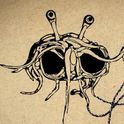How do you incorporate compressed fresh yeast in dough- do you dissolve it first in water, milk, do you keep certain temperature etc?
5 Comments
QueenSashyJanuary 29, 2013
I usually warm up milk (or water) to about 110°F, add a pinch of sugar and crumbled yeast, stir to dissolve, and wait for about 10-15 minutes, until it becomes foamy and doubles in volume.
FutureChefJanuary 29, 2013
Pretty versatile application
1) general rule of thumb according to most Italians is to dissolve salt in water, then yeast, then flour.
2) at French culinary institute, they actually do flour and water first, then do autolyse with salt and yeast (no dissolving required)
1) general rule of thumb according to most Italians is to dissolve salt in water, then yeast, then flour.
2) at French culinary institute, they actually do flour and water first, then do autolyse with salt and yeast (no dissolving required)
trampledbygeeseJanuary 28, 2013
I forgot to add, when not using it, I keep it in the fridge. It's what the backer that sells me it said to do, otherwise it will spoil in a couple of days.
It lasts a little under a month in the door of the fridge for me. It will still work after that time, but it gets a strange smell that I don't like.
It lasts a little under a month in the door of the fridge for me. It will still work after that time, but it gets a strange smell that I don't like.
trampledbygeeseJanuary 28, 2013
Fresh yeast, as in fresh cake yeast that comes shaped like a pound of butter but is dark grey and flaky?
I usually cut off how much I need (by weight) and then dissolve it in a small amount of the moisture the recipe calls for - tepid or luke warm (about body temp) while I get everything else ready (roughly 15 min) before mixing it in.
The book, The Italian Cooking Encyclopaedia has a lot of recipes working with fresh cake yeast. They are relatively simple, and if you can ever get your hands on a copy of that book, a great place to start learning about how to work with it.
I usually cut off how much I need (by weight) and then dissolve it in a small amount of the moisture the recipe calls for - tepid or luke warm (about body temp) while I get everything else ready (roughly 15 min) before mixing it in.
The book, The Italian Cooking Encyclopaedia has a lot of recipes working with fresh cake yeast. They are relatively simple, and if you can ever get your hands on a copy of that book, a great place to start learning about how to work with it.
boulangereJanuary 28, 2013
What are you making? Generally, by all means do dissolve it in your gently warmed liquid (around body temperature).
Showing 5 out of 5 Comments
Recommended by Food52
Popular on Food52
Continue After Advertisement


